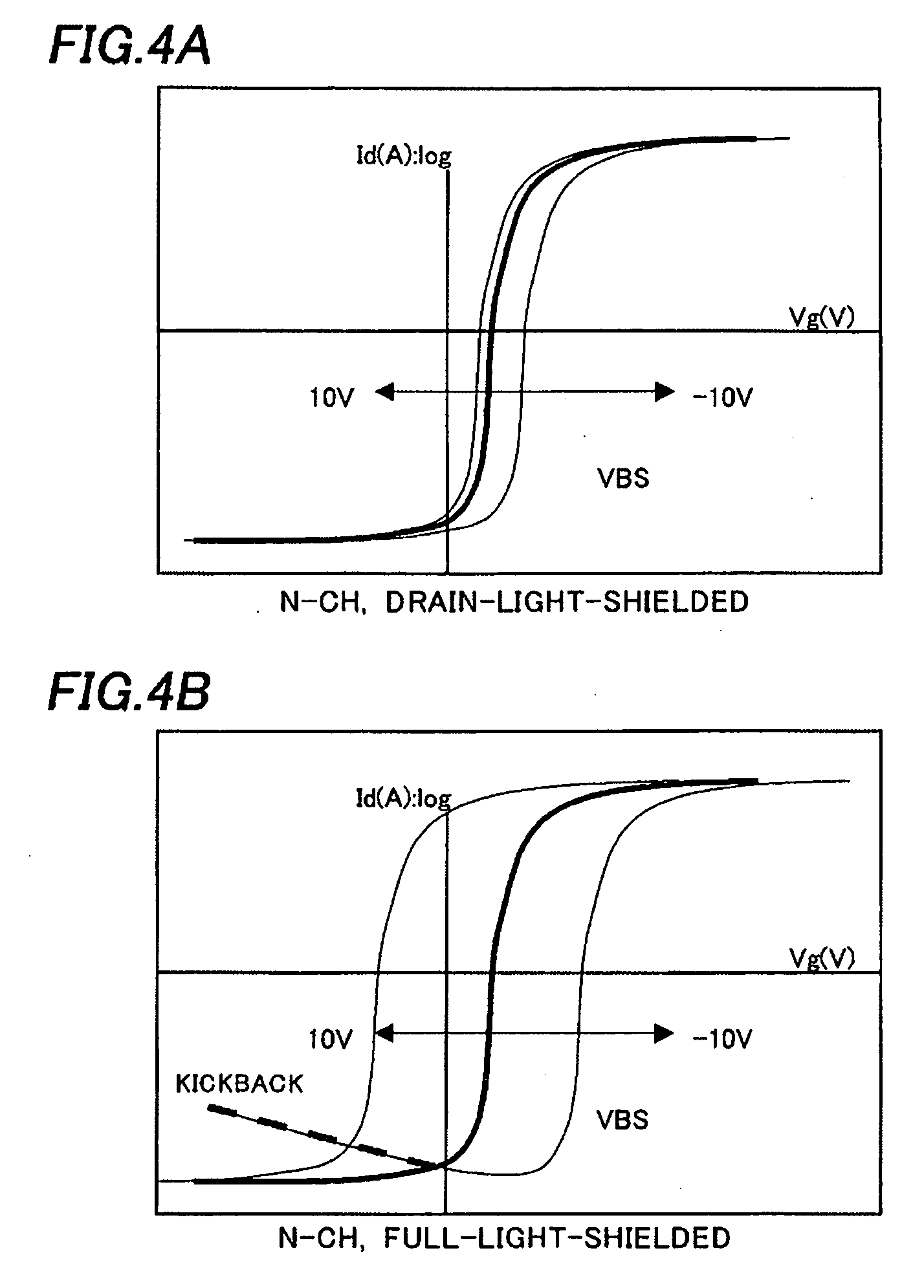Thin film transistor and organic electroluminescent display device
a thin film transistor and display device technology, applied in the direction of electroluminescent light sources, thermoelectric devices, electric lighting sources, etc., can solve the problems of deteriorating display contrast, exacerbated display quality, and unstable characteristics of transistors, so as to reduce variations in characteristics (for example, a threshold voltage) and suppress photoelectric current generation
- Summary
- Abstract
- Description
- Claims
- Application Information
AI Technical Summary
Benefits of technology
Problems solved by technology
Method used
Image
Examples
second embodiment
[0030] Considering the above, a thin film transistor according to this invention is provided with a second light-shielding layer 3s that covers only a boundary region between the source region 2s and the channel region 2c, in addition to the drain-light-shielding layer (a first light-shielding layer) 3d, as shown in FIG. 3. The insulating film 22 is also interposed between the second light-shielding layer 3s and the active layer 2.
[0031] This thin film transistor is effective to suppress the generation of the photoelectric current when the p-n junction associated with the drain region 2d is reverse biased and when the p-n junction associated with the source region 2s is also reverse biased. In addition, because it is not full-light-shielded, the variation in the characteristics due to the variation in the electric potential at the light-shielding layer 3d and the light-shielding layer 3s is suppressed to some extent.
[0032] Although the first and second embodiments are described for...
third embodiment
[0039]FIG. 7 is a circuit diagram of one of the pixels in the organic EL display device according to this invention. A pixel selection transistor T1 is shown in the circuit diagram, in addition to the drive transistor T2. The pixel selection transistor T1 is turned on in response to a gate signal on a gate line GL to transfer a video signal Vsig to the gate of the drive transistor T1. A storage capacitor Cs retains the video signal Vsig. The pixel selection transistor T1 is of n-channel type and the drive transistor T2 is of p-channel type.
[0040] When illuminated by extraneous light as intensive as 100,000 lux, a photoelectric current (off leakage current) is caused in the pixel selection transistor T1 to discharge the charges stored at the gate of the drive transistor T2. As a result, there is caused vertical interference among the pixels, that is, display failure due to crosstalk. In order to avoid it, the pixel selection transistor T1 also needs to be provided with a light-shield...
fifth embodiment
[0042]FIG. 9 shows a circuit diagram of one of pixels in an organic EL display device according to this invention. It is the most preferable circuit in which a drive transistor T2 is provided with a drain-light-shielding layer 3d while a pixel selection transistor T1 is provided with a drain-light-shielding layer 3d and a source-light-shielding layer 3s (Refer to FIG. 3.). As a result, the photoelectric current (off leakage current) caused by the extraneous light can be suppressed to improve the display contrast and the variation in the characteristics (the variation in the threshold voltage, for example) of the transistor can be reduced regardless the high level voltage of the gate signal and the video signal Vsig, for both the drive transistor T2 and the pixel selection transistor T1.
[0043] With the thin film transistors of these embodiments, the variation in the characteristics (threshold voltage, for example) of the thin film transistor can be reduced, while the photoelectric cu...
PUM
 Login to View More
Login to View More Abstract
Description
Claims
Application Information
 Login to View More
Login to View More - R&D
- Intellectual Property
- Life Sciences
- Materials
- Tech Scout
- Unparalleled Data Quality
- Higher Quality Content
- 60% Fewer Hallucinations
Browse by: Latest US Patents, China's latest patents, Technical Efficacy Thesaurus, Application Domain, Technology Topic, Popular Technical Reports.
© 2025 PatSnap. All rights reserved.Legal|Privacy policy|Modern Slavery Act Transparency Statement|Sitemap|About US| Contact US: help@patsnap.com



